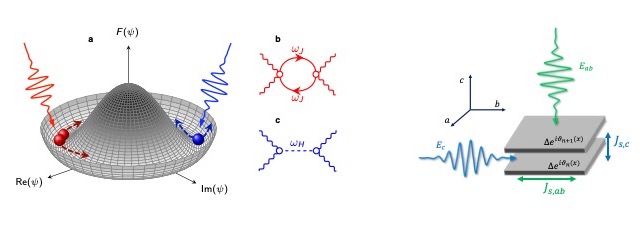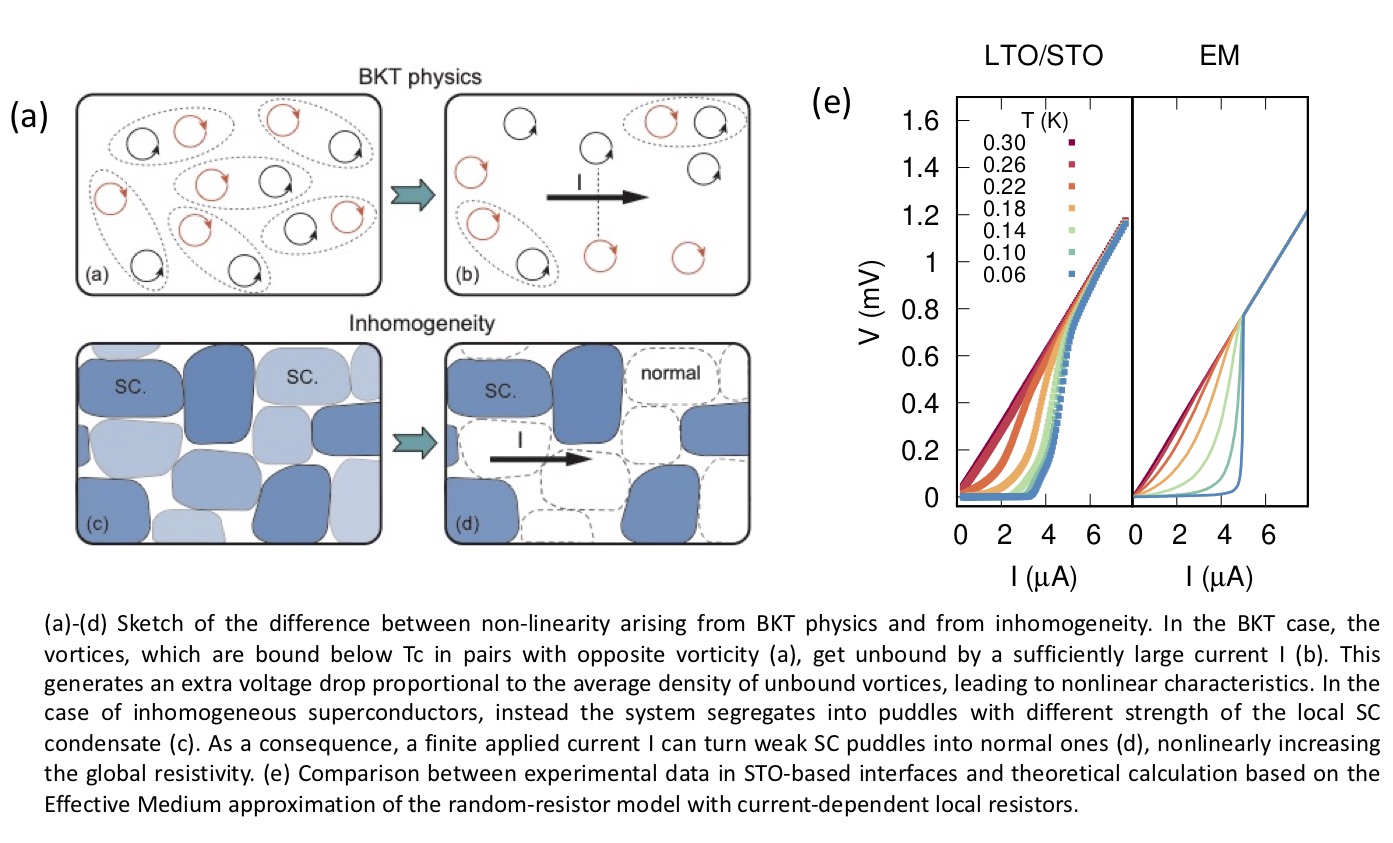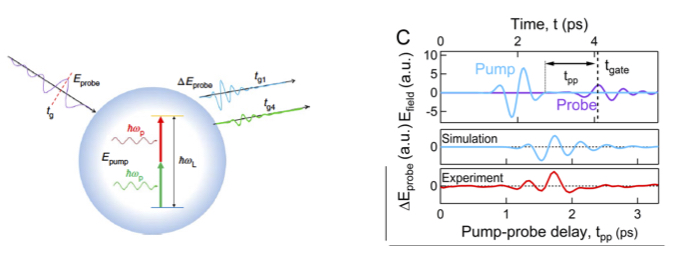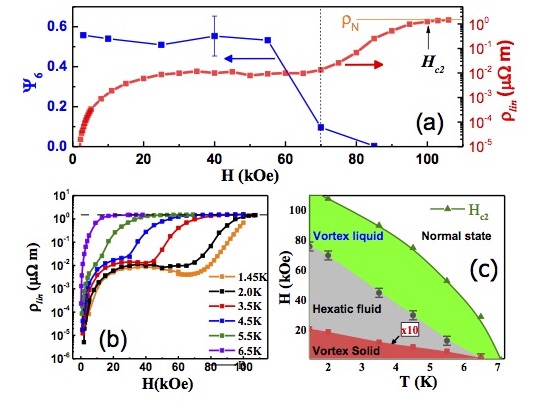Non-linear THz driving of superconducting phase modes
February 2021
The hallmark of superconductivity is the rigidity of the
quantum-mechanical phase of electrons, responsible for
superfluid behavior and Meissner effect. The strength of the
phase stiffness is set by the Josephson coupling, which is
strongly anisotropic in layered superconducting cuprates,
leading to a soft c-axis plasmon, whose energy if of order of
1 THz, and to a hard in-plane plasmon, whose energy (~100 THz)
exceeds the THz range. So far, THz light pulses have been
efficiently used to excite resonantly the out-of-plane
Josephson plasma mode, as is typically shown by enhanced
third-harmonic generation (THG) and marked pump-probe
oscillations. On the other end, the high-energy
in-plane plasma mode has been assumed to be insensitive to THz
pumping. Nonetheless, recent experiments in cuprates show
several effects that cannot be easily ascribed to the BCS
response or to the Higgs mode. For example, the symmetry of
the THG signal is not compatible with either mechanism, if one
correctly includes the effects of disorder, as we have studied
in Phys.
Rev. B 103, 014512 (2021). In a recent paper
published in Nature Communications (Nat.
Comm. 12, 752 (2021) we show that THz driving of both
low-frequency and high-frequency plasma waves is possible via
a general two-plasmon excitation mechanism. The anisotropy of
the Josephson couplings leads to marked differences in the
thermal effects among the out-of-plane and in-plane response,
consistently with the experiments. In particular our results
link the observed survival of the in-plane THz non-linear
driving above

Left: Schematic of the mexican-hat potential of a superconductor. Light pulses can excite either a single Higgs mode (c) or two plasma mode with opposite momenta. In layered cuprates the phase stiffness is strongly anisotropic, with Js,c << Js,ab. The corresponding plasma excitations induced by a field polarized along c or along the ab planes occur at very different energies, and give rise to marked different behavior of the corresponding THG.
Non-linear transport: BKT or inhomogeneity?
August 2019
One of the hallmarks of the Berezinskii-Kosterlitz-Thouless (BKT) physics is
the discontinuous jump of the superfluid stiffness Js
at the transition temperature from a finite and universal
value to zero. However, in real materials such a jump is
usually replaced by a rapid and continuous downturn, that
can be still ascribed to BKT physics once the low value of
the vortex-core energy and a moderate sample inhomogeneity
are taken into account, as our group demonstrated few years
back by means of direct comparison between theoretical calculations and the penetration-depth
measurements by the group of P. Raycahudhuri at TIFR in Mumbai (see Phys. Rev. Lett. 107, 217003 (2011)).
This effect can also be evinced by means of transport
measurements thanks to the possibility of a large enough
current to unbind vortex-antivortex pairs below Tc,
generating an extra voltage that reflects in non-linear IV
characteristics. The universal jump of Js at Tc
should then reflects in an universal jump of the IV exponent
a from a=3 right below Tc to a=1 right above it.
What happens then when the Js jump is smeared by
disorder? And what is the fate of the BKT signatures when
the sample inhomogeneity occurs on mesoscopic length scales,
making percolative effects more pronounced than BKT physics?
In a recent work published in Phys.
Rev. B 100, 064506 (2019) we demonstrated that while
IV characteristics in thin NbN films represent a textbook
example of BKT physics, the pronounced non linearity
observed in STO-based interfaces do not seem to justify a BKT
analysis. Rather, the observed I−V
characteristics can be well reproduced theoretically by
modeling the effect of mesoscopic inhomogeneity of the
superconducting state. Our results offer an alternative
perspective on the spontaneous fragmentation of the
superconducting background in confined two-dimensional
systems.

Leggett mode controlled by light pulses
March 2019
The discovery of symmetry-broken phases that host multiple order parameters, such as multiband superconductors, has triggered an enormous interest in condensed matter physics. However, many challenges continue to hinder the fundamental understanding of how to control the collective modes corresponding to these multiple order parameters. In particular, the advent of THz spectroscopy with the use of very intense pulsed field paved the way to new protocols to detect these collective electronic excitations. In a recent paper published in Nature Physics we demonstrate that, in full analogy with phonons, Raman-active electronic collective modes can be manipulated by intense light pulses. By tuning a sum-frequency excitation process, we selectively trigger a collective mode that we identify with the one corresponding to the relative phase fluctuations between two superconducting order parameters—the so-called Leggett mode—in the multiband superconductor MgB2. The excellent comparison between experiments and theory is made possible but a step-to-step theoretical description of the full pump-probe protocols, that was lacking so far for these kind of experiments. On this respect, besides providing the first experimental evidence of the THz-induced excitation of the Leggett mode, we establishes a general protocol for the advanced control of Raman-active electronic modes in symmetry-broken quantum phases of matter.

Left: schematic of the two-photon absorption
by the pump field in typical pump-probe experiments, where the
probe signal is recorded at a fixed observation time tgate as a function of the pump-probe delay
tpp between the pump and probe field.
Right: experimental observation of the Leggett oscillations,
compared with theoretical simulations
Hexatic phases in MoGe thin films
January 2019
According to the
Berezinskii-Kosterlitz-Thouless theory, later refined by
Halperin, Nelson and Young, the melting of a 2D solid
crystal should happen via two subsequent transitions
controlled by topological excitations. At the first
transition thermally excited free dislocations proliferate
in the lattice breaking the lattice rigidity but
preserving its orientational order. At higher temperatures
the emergence of isolated disclinations suppressed the
remnant orientational order leading to a conventional,
isotropic fluid. The melting of the vortex lattice in thin
films of type II superconductors belong to the BKTHNY
universality class. The intermediate phase is called
hexatic since the orientationally-ordered liquid state is
expected to have the hexagonal symmetry of the vortex
lattice in the crystalline phase. In a recent paper
published in Phys.
Rev. Lett. we used a combination of transport
measurements and STM imaging of the vortex lattice to
demonstrate the existence of a hexatic phase in thin films
of MoGe. Beside standard static characterization of the
orientational liquid, we investigated its time evolution:
by visualizing via STM the vortex lattice at regular time
steps we proved that the vortexes in the hexatic fluid
phase move, due to internal stress, along preferantial
directions corresponding to hexgonal order.

(a) Field dependence of the resistivity and of the hexatic order parameter at 2K (b) Field dependence of the resistivity in the vortex-liquid phase at various temperature. (c) Resulting phase diagram of a-MoGe obtained by combining transport and STS measurements of the vortex lattice.
